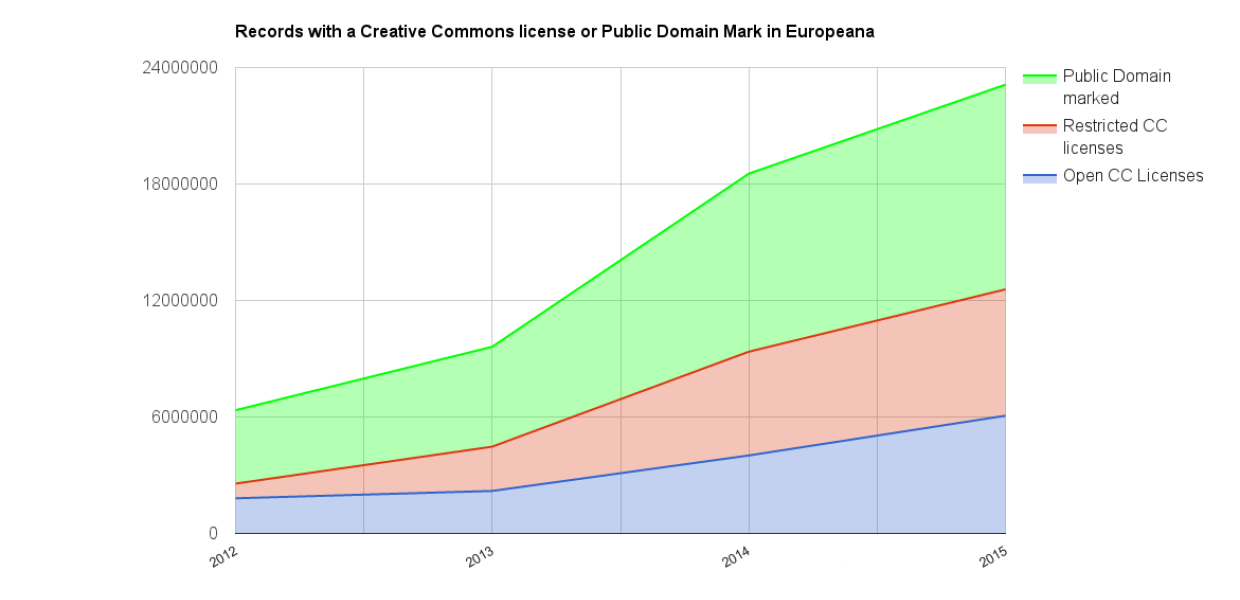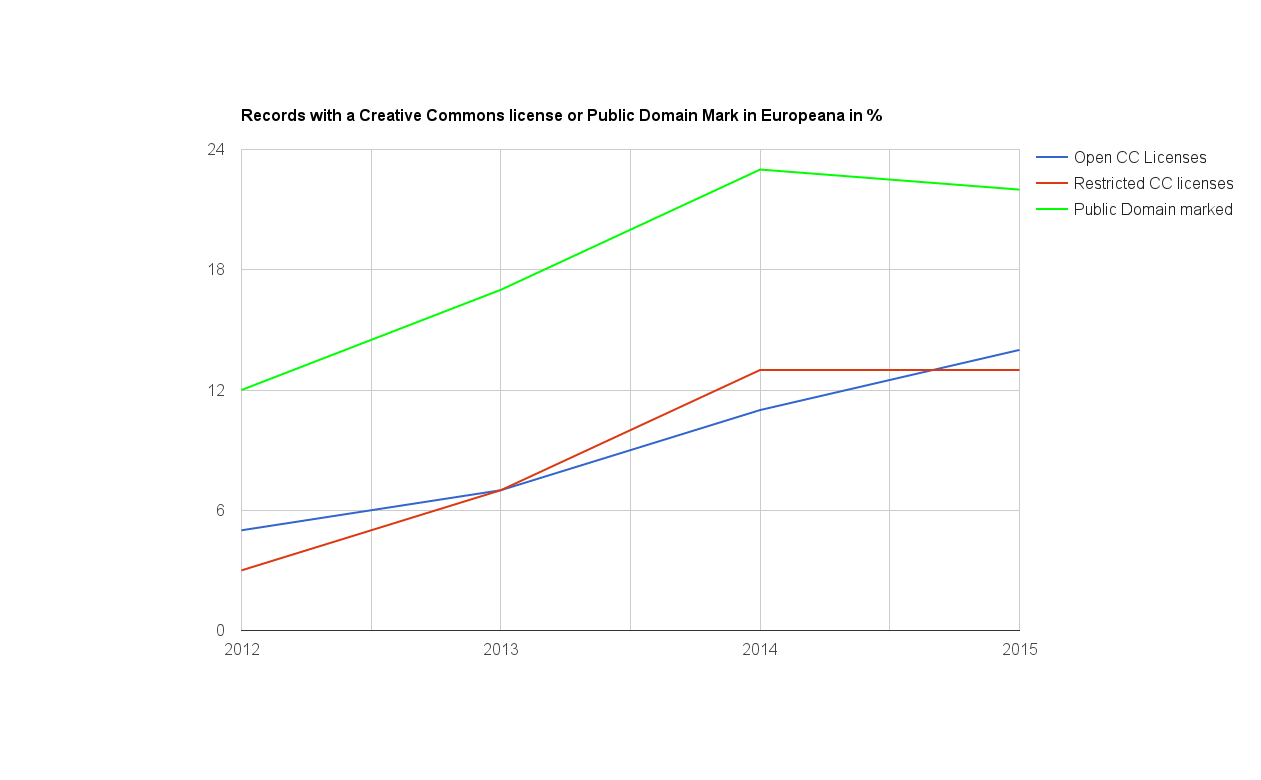The State of the Commons in Europeana: a 2015 review

Europeana aims to give everyone the best possible access to Europe’s digitised cultural heritage, no matter where they live. Copyright is an essential part of this. When someone finds a cultural object they’re interested in, be it a book, painting or film, they need to know what they legally can and cannot do with it. Creative Commons has been helping with this over recent years.
Today, Creative Commons published their State of the Commons Report with the following announcement:
“Creative Commons, the global nonprofit that makes it easier for creators to share their work under simple copyright terms, announced a major milestone in the release of its 2015 State of the Commons Report today: over 1 billion works have been licensed using Creative Commons since the organization’s founding.
This milestone was announced along with other significant data points in its State of the Commons report, which covers the growth of CC content on platforms, the globalization of CC tools, and cultural trends in the digitization of creative works. The State of the Commons report can be viewed here.”
Europeana has been offering the Creative Commons licenses to the cultural institutions we work with since we launched in 2008. With the creation of the Licensing Framework in 2011, they became part of a set of 13 rights statements which we offer to institutions to choose from when they contribute collections to Europeana.
Since then, hundreds of cultural institutions around Europe have started licensing their works using the Creative Commons licenses and the Public Domain Mark that Creative Commons provides. This mark makes clear that the work is free from any copyright restrictions, most likely due to its age. We divide the Creative Commons licenses into two categories: the open licenses (CC0, CC BY and CC BY-SA) and the restricted ones (with non-commercial or non-derivative limitations).

Above, you can see how the use of these licenses has grown. The increase from 2013 to 2014 was mainly down to the Europeana Rights Labelling Campaign which we carried out together with Kennisland. Our goal was for every record in Europeana to include a rights statement - something we successfully achieved. During the campaign, we had numerous discussions with cultural institutions about which licenses to use and many adopted a Creative Commons license as a result.
As we approach the end of 2015, more than a quarter of the material you can find in Europeana is licensed with a Creative Commons license, as shown in the graph below. Another 22% of the collections come labelled with the Public Domain Mark.

For Europeana’s metadata, Creative Commons has again proved essential. In September 2012, Europeana dedicated all of its metadata to the public domain using the Creative Commons Zero Public Domain waiver (CC0) - a major milestone for Europeana and the open data movement. From this moment on, Europeana’s metadata became available to anyone, for any purpose, without any copyright restrictions. This created, and continues to create, huge opportunities for 3rd parties to re-use Europeana’s data using the Europeana API.
The growth of Creative Commons in the cultural sector has been remarkable and we predict that, in line with the aims of the recently published Europeana Publishing Framework, the amount of open content in Europeana will amount to over half of the total collections. Despite this, there’s still a lot of work to be done. Creative Commons licenses are great, but it’s not always clear how to use them properly, or what the different implications are for each institution. We will therefore continue to offer training and documentation to the heritage sector and actively advocate for the use of open licenses and the maintenance of a healthy public domain.
Today we want to congratulate and thank Creative Commons for all the great work they have been doing, and for providing these tools vital to making our shared memory available to all.
